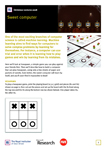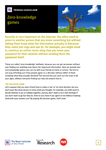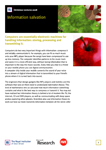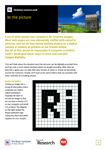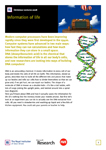Learning from probabilities
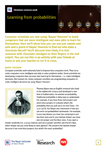 Computer scientists are now using ‘Bayes’ theorem’ to build computers that are more intelligent and even able to learn for themselves. Here we’ll show how you can use just sweets and pots and a pinch of Bayes’ theorem to find out who stole a chocolate biscuit! You’ll discover how likely it is that someone with chocolate smudged on their fingers is the real culprit. You can run this is an activity with your friends at home or ask your teacher to run it in class.
Computer scientists are now using ‘Bayes’ theorem’ to build computers that are more intelligent and even able to learn for themselves. Here we’ll show how you can use just sweets and pots and a pinch of Bayes’ theorem to find out who stole a chocolate biscuit! You’ll discover how likely it is that someone with chocolate smudged on their fingers is the real culprit. You can run this is an activity with your friends at home or ask your teacher to run it in class.
Download pdf
